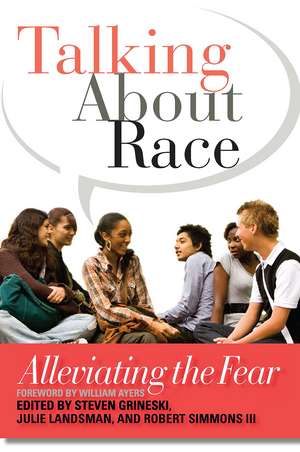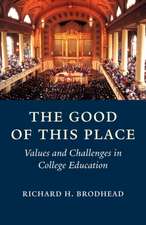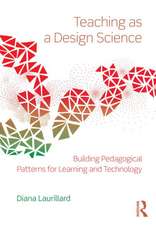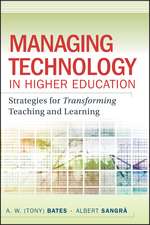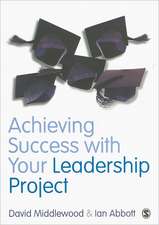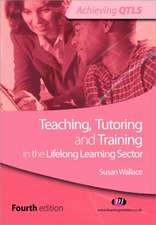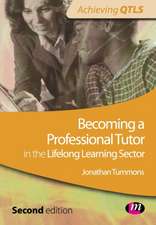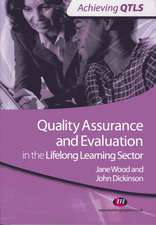Talking About Race: Alleviating the Fear
Editat de Steven Grineski, Julie Landsman, Robert Simmons IIIen Limba Engleză Paperback – 19 mar 2013
| Toate formatele și edițiile | Preț | Express |
|---|---|---|
| Paperback (1) | 286.26 lei 6-8 săpt. | |
| Taylor & Francis – 19 mar 2013 | 286.26 lei 6-8 săpt. | |
| Hardback (1) | 1005.17 lei 6-8 săpt. | |
| Taylor & Francis – 19 mar 2013 | 1005.17 lei 6-8 săpt. |
Preț: 286.26 lei
Nou
Puncte Express: 429
Preț estimativ în valută:
54.78€ • 59.69$ • 46.16£
54.78€ • 59.69$ • 46.16£
Carte tipărită la comandă
Livrare economică 23 aprilie-07 mai
Preluare comenzi: 021 569.72.76
Specificații
ISBN-13: 9781579225605
ISBN-10: 1579225608
Pagini: 340
Dimensiuni: 152 x 229 x 18 mm
Greutate: 0.49 kg
Ediția:1
Editura: Taylor & Francis
Colecția Routledge
Locul publicării:Oxford, United Kingdom
ISBN-10: 1579225608
Pagini: 340
Dimensiuni: 152 x 229 x 18 mm
Greutate: 0.49 kg
Ediția:1
Editura: Taylor & Francis
Colecția Routledge
Locul publicării:Oxford, United Kingdom
Public țintă
Postgraduate and Professional Practice & DevelopmentCuprins
Acknowledgments Poem. "Unless" Rose McGee Foreword. Digging Deeper William Ayers Introduction. Our Separate Voices, Our Combined Vision Poem. “A Drive-by in Frogtown” Paul C. Gorski PART ONE. Getting Grounded 1.Black Silence, White Noise. Race and Labels Johnnetta S. C. Ricks and Imandeep Kaur Grewal 2.Working While White. Observations, Missteps, and Suggestions Amy Philips and Anita Bender 3.Complicating White Privilege. Poverty, Class, and Knapsack Paul C. Gorski 4.Breaking the Cycle of Color Blindness in Higher Education Caprice D. Hollins PART TWO. When It Goes Wrong, When It Goes Right 5.A Small Request With a Big Answer. Can I Borrow Your Copy Code? And Other Pitfalls of Teaching in a Large Public School District Laura Zelle 6.Vignettes on Education and Racism in My Life and the Lives of My Children Ruth Newton 7.The Color of Our Skin Naomi Rae Taylor 8.A Developmental Approach to Civility and Bystander Intervention Jennifer McCary PART THREE. Classroom Dialogues. Preschool, Elementary 9.White Skin and Princess Hair. Exploring Race in a Preschool Classroom Brigid Beaubien and Linda Williams 10.Lessons Learned. Creating a Safe Space to Navigate a Challenging Topic Pam Booker 11.Conversations With Children. Discussions About Race and Identity Cheryl Moore-Thomas and Jennifer Scaturo Watkinson 12.My Preschool Experience Expressed in a Mexican Proverb. La mula no era arisca, la hicieron Cindy Gomez-Schempp PART FOUR. Classroom Dialogues. Middle and High School 13.Letter From a High School Student #1 Eva Mitchell 14.Middle School Lessons Lead to Deeper Insights on Race and Class Amy Vatne Bintliff 15.Disrupting School. Learning Autobiographies as Queer Curriculum Jehanne Beaton Zirps 16.Letter From a High School Student #2. Bring in Elders, Let Us Talk About These Things Fardousa Ahmed 17. Exploring the Intersection of Ageism and Racism Ilsa Govan 18.Combating Huck Finn’s Censorship. A Step-by-Step Approach to Discussing the N-Word in the Classroom Justin Grinage 19.Letter From a High School Student #3 Carlo Balleria 20.The Miseducation of Nigger in American Schools Marcellus Davis, Alexander Hines, and Kenneth Turner 21.Crossing the Racial Line. Making a s.t.a.r.t Kate Towle PART FIVE. Connecting to the Community 22.Not Just for a School Year Stacy Amaral and Shirley Williams 23.Interview With Mariano Espinoza, Minnesota DREAM Act Movement Leader. Latino Perspectives on Race Equity in Education and Teaching Jennifer Godinez 24.Pinocchio in Black America Ben Mchie PART SIX. Digging Deeper in the Arts 25.Hip-Hop and Conversation Jennifer Skoglund 26.“I Know My Brother and He Is Good”. Using Photography to Engage Youth in Discussions of School and Race Kristien Zenkov, Marriam Ewaida, Megan R. Lynch, Athene Belle, James Harmon, and Anthony Pellegrino 27.Looking at Race. Adding Images to Conversation Adam Levner 28.Outside the Bubble Rachel Rycerz PART SEVEN. Implications for Teacher Education 29.Talking About Race. A Story From a Teacher Educator Ok-Hee Lee 30.Cross-Race Mentoring in Teacher Education. Black Teacher Educators Supporting White Pre-Service Teachers Valerie Hill-Jackson and Omah Williams 31.Reflections on Teaching and Learning About Antiracism Sue Peterson and Tracy Clark 32.Preparing NativityMiguel Teachers to Work With Children of Color From High-Poverty Environments L. Mickey Fenzel and Melodie Wyttenbach 33.Moving From the Margins to Intersections. Using Race as a Lens for Conversations About Oppression and Resistance Phyllis M. May-Machunda 34.Letters to Our Teachers. Black and Latino Males Write About Race in the Classroom Yolanda Sealy-Ruiz and Chance W. Lewis Suggested Readings About the Contributors Index
Notă biografică
Steven Grineski started his teaching career in 1975 as an elementary school teacher. In 1984 he joined the Minnesota State University Moorhead (MSUM) faculty and earned his doctorate from the University of North Dakota in 1989. While at MSUM Steve served as Dean of Education, Chairperson for Secondary Education and Foundations, Director of Faculty Development, and taught in several different departments and regularly in the local public schools. Currently he is Professor in the School of Teaching and Learning and teaches in the Foundations of Education program, while serving as field experience liaison between the MSUM Teacher Education and the Moorhead, Minnesota, Alternative Education programs. Steve has made over 100 presentations at state, regional, and international conferences; and published over 75 articles and 4 books in diverse areas including cooperative learning, critiquing corporate school reform, alternative education, holistic approaches to teacher education, critical perspectives about instructional technology, talking about race and racism, and the history of education. Steve and his wife Lee are parents to daughters Abby and Sara and privileged grandparents to Noah, Libby, and Caleb. Julie Landsman has taught in Minneapolis Public Schools for 25 years. She has also been a visiting Professor at Carleton College in Northfield Minnesota, and an adjunct professor at Hamline University and Metro State University in St. Paul. She is the author of numerous books on race and education and a frequent speaker and consultant around the country and abroad. She can be reached through her website at jlandsman.com Robert Simmons III is an assistant professor in the School of Education at Loyola University Maryland, an associated faculty member of African and African American studies, and a member of the social justice collaborative Edchange. Robert’s K-12 teaching experiences include being a middle school science teacher and elementary teacher in th
Recenzii
"Our schools too-often banish the unpopular, squirm in the presence of the unorthodox, hide the unpleasant. Much of what we call schooling forecloses or shuts down or walls off meaningful conversation, dialogue, and choice-making. There’s little space for skepticism, irreverence, or doubt. While many of us long for teaching as something transcendent and powerful, we find ourselves too-often locked in situations that reduce teaching to a kind of glorified clerking, passing along a curriculum of received wisdom and predigested and generally false bits of information. This collection offers a means to disrupt and reconnect, and a way forward."
Bill Ayers
Bill Ayers
Descriere
Do you warn your children about how people might react to them; find store staff following or watching you; get stopped by the police for no reason? The students of color in your classroom experience discrimination every day, in small and large ways.
